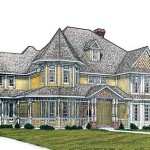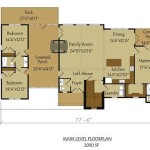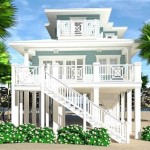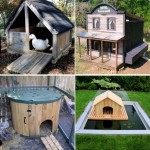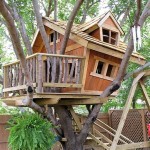Quonset House Plans are architectural blueprints that provide detailed instructions for the construction of Quonset huts. These versatile structures, originally designed for military use during World War II, are renowned for their durability, adaptability, and cost-effectiveness.
Quonset houses are characterized by their distinctive semi-cylindrical shape and corrugated metal exterior. Their lightweight steel frames make them easy to transport and assemble, while their spacious interiors offer ample room for a variety of residential or commercial applications. Whether used as homes, workshops, or storage facilities, Quonset houses have become an enduring choice for those seeking affordable and functional shelter.
As we delve deeper into this article, we will explore the advantages and disadvantages of Quonset house plans, discuss various design options, and provide insights into their construction process.
Quonset house plans offer a range of advantages and considerations:
- Durable and weather-resistant
- Cost-effective and energy-efficient
- Versatile and customizable
- Easy to transport and assemble
- Spacious and well-lit interiors
- Can be used for residential or commercial purposes
- Available in various sizes and styles
- May require additional insulation in cold climates
Careful planning and consideration of local building codes are essential before constructing a Quonset house.
Durable and weather-resistant
Quonset house plans are renowned for their exceptional durability and weather resistance, making them suitable for various climates and conditions.
- Galvanized steel exterior: The corrugated metal exterior of Quonset houses is galvanized to protect against rust and corrosion, ensuring longevity even in harsh environments.
- Aerodynamic design: The semi-cylindrical shape of Quonset houses is aerodynamic, allowing wind and snow to easily slide off the roof, reducing the risk of structural damage during storms.
- Strong steel frame: The steel frame that supports Quonset houses is engineered to withstand high winds and heavy snow loads, providing stability and peace of mind.
- Minimal maintenance: Unlike traditional wood or brick structures, Quonset houses require minimal maintenance, as their galvanized steel exterior resists rot, decay, and insect damage.
As a result of their durable construction, Quonset houses can withstand extreme weather conditions, including hurricanes, earthquakes, and heavy snowfall, making them an ideal choice for regions prone to natural disasters.
Cost-effective and energy-efficient
Quonset house plans offer significant cost savings and energy efficiency compared to traditional building methods:
- Lower construction costs: Quonset houses require less materials and labor to construct than conventional homes, as their prefabricated steel components can be quickly assembled on-site, reducing overall building time and expenses.
- Energy efficiency: The galvanized steel exterior of Quonset houses provides excellent insulation, reducing heat loss in winter and heat gain in summer. This inherent insulation can lower energy consumption and utility bills.
- Low maintenance costs: As previously mentioned, Quonset houses require minimal maintenance due to their durable steel exterior, further reducing long-term expenses associated with repairs and upkeep.
- Reduced insurance premiums: The durability and weather resistance of Quonset houses can result in lower insurance premiums compared to traditional structures, as they are less susceptible to damage from storms, fires, and other hazards.
Overall, the cost-effectiveness and energy efficiency of Quonset house plans make them an attractive option for budget-conscious homeowners and businesses seeking sustainable building solutions.
Versatile and customizable
Quonset house plans offer exceptional versatility and customization options to meet diverse needs and preferences:
- Adaptable to various uses: Quonset houses are not limited to residential purposes; they can be easily adapted for commercial, industrial, agricultural, and recreational uses, such as workshops, storage facilities, retail spaces, and even churches.
- Flexible design options: Quonset house plans come in a range of sizes and styles, from small single-room structures to large multi-room buildings. They can be customized with additional features such as windows, skylights, overhead doors, and insulation to suit specific requirements.
- Expandable design: Quonset houses can be easily expanded or modified in the future by adding additional bays or sections to the original structure, providing flexibility and room for growth.
- Interior layout customization: The open and spacious interior of Quonset houses allows for flexible interior layout planning. Walls, partitions, and mezzanines can be added to create separate rooms, offices, or storage areas as needed.
The versatility and customization options of Quonset house plans make them an ideal choice for those seeking adaptable and tailored building solutions.
Easy to transport and assemble
Quonset house plans are designed for ease of transport and assembly, making them ideal for remote locations or projects with tight deadlines:
Lightweight steel components: Quonset houses are constructed using prefabricated steel components that are lightweight and easy to transport to the building site. This reduces shipping costs and simplifies the logistics of delivering materials to remote areas.
Modular design: The modular design of Quonset houses allows for efficient assembly. The prefabricated components are designed to fit together seamlessly, reducing the need for extensive on-site fabrication and minimizing construction time.
Bolt-together construction: Quonset houses are typically assembled using bolts, rather than welding, which simplifies the construction process and allows for easy disassembly and relocation if necessary.
The ease of transport and assembly makes Quonset house plans an excellent choice for projects in remote areas, disaster relief efforts, and temporary or seasonal structures.
Spacious and well-lit interiors
Quonset house plans offer spacious and well-lit interiors due to their unique design and construction:
Open and column-free interiors: The semi-cylindrical shape of Quonset houses creates open and column-free interiors, maximizing usable space and providing a sense of spaciousness. The absence of interior columns or load-bearing walls allows for flexible layout planning and efficient use of space.
High ceilings: Quonset houses typically have high ceilings, ranging from 10 to 20 feet or more, which contributes to the feeling of spaciousness and airiness. The vaulted ceilings also allow for the installation of mezzanines or lofts to create additional living or storage space.
Abundant natural light: Quonset houses can be designed with ample windows and skylights to maximize natural light. The curved exterior walls allow for the placement of windows along the entire length of the building, providing panoramic views and reducing the need for artificial lighting during the day.
The spacious and well-lit interiors of Quonset houses make them ideal for a variety of uses, from residential living spaces to commercial and industrial applications where ample space and natural light are essential.
Can be used for residential or commercial purposes
Quonset house plans offer versatility in their usage, extending beyond residential applications to a wide range of commercial purposes. Their adaptable designs make them suitable for various industries and businesses.
- Residential living spaces: Quonset houses are popularly used as homes, providing spacious and comfortable living environments. Their durability and energy efficiency make them ideal for both permanent and seasonal residences.
- Commercial buildings: Quonset houses can be adapted for commercial use, such as retail stores, offices, restaurants, and warehouses. Their open interiors and flexible layouts allow for efficient space utilization and customization to meet specific business needs.
- Industrial applications: Quonset houses are commonly used in industrial settings, serving as workshops, factories, storage facilities, and equipment shelters. Their robust construction and durability can withstand heavy machinery and industrial activities.
- Agricultural buildings: Quonset houses are well-suited for agricultural purposes, providing ample space for livestock, storage of crops and equipment, and other agricultural operations. Their durability and resistance to harsh weather conditions make them ideal for farm and ranch applications.
The versatility of Quonset house plans allows them to be tailored to a diverse range of residential and commercial needs, offering adaptable and cost-effective building solutions for various industries and applications.
Available in various sizes and styles
Quonset house plans come in a wide range of sizes and styles to accommodate diverse needs and preferences. From compact single-room structures to large multi-room buildings, there is a Quonset house plan to suit every requirement.
- Compact designs: Quonset houses can be designed in compact sizes, making them ideal for small spaces or as secondary structures. These compact designs are often used as guest houses, home offices, or storage units.
- Mid-size designs: Mid-size Quonset houses offer more space and flexibility, providing comfortable living quarters or ample room for workshops, studios, or retail stores. They can be customized with additional features such as bedrooms, bathrooms, and kitchenettes.
- Large designs: Quonset houses can be designed in large sizes to accommodate spacious living areas, open floor plans, and multiple rooms. These large designs are suitable for families, businesses, or industrial applications that require ample space.
- Custom designs: In addition to standard sizes and styles, Quonset house plans can be customized to meet specific requirements. Architects and designers can work with clients to create unique Quonset house plans tailored to their individual needs, preferences, and site conditions.
The availability of various sizes and styles makes Quonset house plans highly adaptable and suitable for a diverse range of residential, commercial, and industrial applications.
May require additional insulation in cold climates
Quonset houses, known for their durability and versatility, may require additional insulation in cold climates to maintain comfortable indoor temperatures and energy efficiency. Here are four key points to consider:
- Heat loss through metal exterior: The metal exterior of Quonset houses can conduct heat more easily than traditional building materials like wood or brick. This means that heat can escape more readily during cold weather, leading to higher energy consumption and discomfort for occupants.
- Lack of traditional insulation: Quonset houses typically do not have traditional insulation materials, such as fiberglass or cellulose, incorporated into their structure. This can result in insufficient insulation to retain heat effectively in cold climates.
- Air infiltration: Quonset houses may be more susceptible to air infiltration, where cold air can enter through gaps or cracks in the building envelope. This can further contribute to heat loss and discomfort.
- Condensation and moisture: In cold climates, warm, moist air inside the Quonset house can condense on the metal exterior, leading to moisture accumulation and potential mold growth. Additional insulation helps mitigate condensation and maintain a healthy indoor environment.
To address these concerns, additional insulation is often recommended for Quonset houses in cold climates. This can be achieved through various methods, such as installing insulation blankets or rigid foam panels to the interior walls and ceiling of the structure, effectively increasing the thermal resistance and reducing heat loss.









Related Posts

